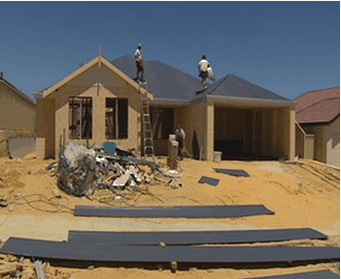
By Gavin R Putland, Research Officer at Prosper Australia
Eight days after SBS reported that Treasury and the Parliamentary Budget Office are working on limiting negative gearing to new homes (while grandfathering past acquisitions), and two days after Louis Christopher of SQM Research backed the story, the Housing [sic] Industry Association has released a “research note” under the title First Home Buyers: The Big Picture. The front page says in part:
Low FHB shares have also been attributed to changes in FHB grant regimes in many states, which have seen the grant for the purchase of existing homes being reduced or eliminated entirely…
If this diagnosis is correct, the obvious remedy is to do precisely what Treasury is contemplating: disallow negative gearing on future purchases of established homes, so that FHBs who don’t get grants don’t have to compete with negative gearers. Curiously, the HIA prefers a battery of alternative explanations, starting with:
A substantial amount of FHB demand was dragged forward due to improved grant incentives and concessions during and following the GFC;
and going on to blame the variation in the fraction of the population in the FHB age group (too slow to explain anything), labour market conditions (a mixed bag), first homes bought as investments (without mentioning negative gearing as a motive!), a rising incidence of parental help and inheritances supporting mortgage-free FHB purchases (honestly — I couldn’t make this up), and the conservatism of FHBs relative to non-FHBs and investors (as if nobody had been sucked in by the First Home Owners’ Boost).
If the reforms that confined grants to new homes were not implicated, there should not be any correlation between the timing of the reforms and the timing of the declines in FHB shares. But there is. The following graph from MacroBusiness shows the FHB share of housing financing commitments (excluding refinancing) in the five mainland states.

The two states without precipitous declines — WA and SA — were slow or half-hearted in reducing the grant for established homes: WA reduced it to $3000 from 25 September 2013, and SA reduced it to $5000 from 22 November 2012 to 30 June 2014 (when it is due to cease). In contrast, NSW terminated the grant for established homes from 1 October 2012, Qld from 11 October 2012, and Victoria from 1 July 2013 — with a correspondingly later decline in the FHB share.
Limiting grants to new homes caused the decline, and limiting negative gearing to new homes will fix it.
Among the HIA’s conclusions is this gem:
FHB confidence will grow as the housing market recovery becomes more consolidated…
And how do the geniuses at the HIA explain how higher prices will make the allegedly cautious FHBs more willing to buy? Two dot-points later comes the answer:
Strong price growth will lead to the accumulation of home equity — allowing increased parental support for home purchase by FHBs.
I kid you not. That’s what they said. We must not have cheaper homes enabling FHBs to get into the market without the help of property-owning parents. We must have more expensive homes so that property-owning parents can give their offspring a bigger unearned head-start over the offspring of their non-property-owning inferiors.
The penultimate paragraph warns:
The most likely impact of imposing penalties on investors is that fewer homes will be built.
Not if the penalty is limited to investment in established homes, so that investors need to build new homes in order to avoid the penalty!
The final paragraph is similarly elliptical:
Accordingly, the real challenge will be for policymakers to ensure… a strong supply of affordable housing… it is vital that policy allows for the provision of an adequate dwelling stock… Policy measures with respect to FHBs, however well intentioned, must ultimately be judged on their ability to support stronger flows of new dwelling supply…
All the more reason to tell property investors that future investments will not qualify for negative gearing unless they add to the supply of housing.
The HIA’s studied silence on this obvious remedy appears calculated to maximize demand-side pressure on prices and minimize infill construction, in order to drive up the values of big developers’ land banks — to the detriment not only of first home buyers, but also of those HIA members whose core business is the actual supply of housing. Smaller builders and developers — who cannot afford to land-bank and must therefore get on with building and developing — together with contractors, designers, kitchen and bathroom makers, and suppliers of materials and components, should be asking exactly what they get for their HIA membership and whether they would be better off breaking away.

